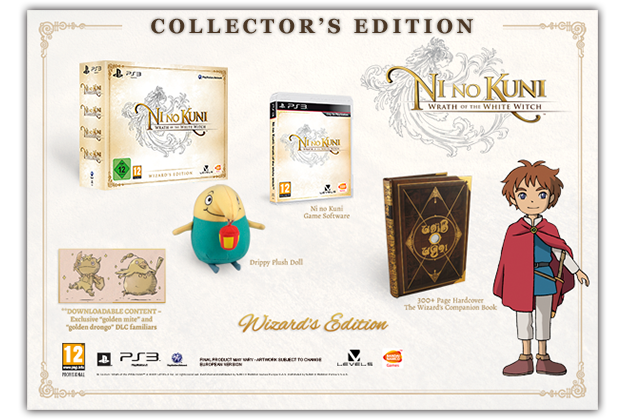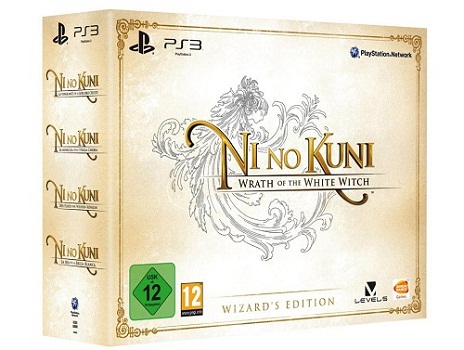Ni no Kuni: Wrath of the White Witch (PS3)
2
Ni no Kuni: Wrath of the White Witch (US/EUR) / 二ノ国 漆黒ã®é”導士 (JPN) [exclusive on PS3]
Animation by Studio Ghibli ; Presented by Level-5 ; Sound Direction by Joe Hisaishi
JP Release Date: 2011-11-17
US Release Date: 2013-1-22
EUR Release Date: 2013-2-1
A combination project between Level-5 and Studio ghibli.
Looks interesting and beautiful
Oh yeah, this one is PS3 version, I don't give a damn for NDS version
REVIEW
PSM, the Official Playstation Magazine UK: 9,1 out of 10 (like he said, the boss battle is hard)
RPG Land: Legendary out of 10 (the most detailed review)
Game Master: 95 out of 100 (the first review of English version)
Playstation Lifestyle: 10 out of 10 (This is his first review who scored perfect ten)
IGN: 9.4 out of 10 (Ni No Kuni is the best JRPG I’ve played in years, and a must-play for an RPG fan with a PS3.)
GodisaGeek: 10 out of 10 (Ni No Kuni is a superb traditionally-styled role player)
Animation by Studio Ghibli ; Presented by Level-5 ; Sound Direction by Joe Hisaishi
JP Release Date: 2011-11-17
US Release Date: 2013-1-22
EUR Release Date: 2013-2-1
Spoiler:
A combination project between Level-5 and Studio ghibli.
Looks interesting and beautiful
Oh yeah, this one is PS3 version, I don't give a damn for NDS version
REVIEW
PSM, the Official Playstation Magazine UK: 9,1 out of 10 (like he said, the boss battle is hard)
RPG Land: Legendary out of 10 (the most detailed review)
Game Master: 95 out of 100 (the first review of English version)
Playstation Lifestyle: 10 out of 10 (This is his first review who scored perfect ten)
IGN: 9.4 out of 10 (Ni No Kuni is the best JRPG I’ve played in years, and a must-play for an RPG fan with a PS3.)
GodisaGeek: 10 out of 10 (Ni No Kuni is a superb traditionally-styled role player)
Spoiler:
Spoiler:
0
wilstreak wrote...
A combination project between Level-5 and Studio ghibli.
Looks interesting and beautiful
Oh yeah, this one is PS3 version, I don't give a damn for NDS version
No shitting... I'll have to keep an eye on this, Studio Ghibli is full of win.
0
Yeah but Level 5 have been disappointing me lately. Knowing them ,this won't be hitting EU or US for a while. So, i'll check it out once its closer to our hands
0
is this supposed to be the sequel from the DS ver?
because i only saw my friend playing the DS ver last year after the TGS event.
because i only saw my friend playing the DS ver last year after the TGS event.
0
Yushi wrote...
Yeah but Level 5 have been disappointing me lately. Knowing them ,this won't be hitting EU or US for a while. So, i'll check it out once its closer to our handsThey're the ones who did White Knight Chronicles and Dark Cloud right?
0
Definitely looking forward to this game since I saw the japanese promo. I think the US launch date is in January.
0
Hentanize
rebaS
I'm not into Miyazaki at all but this game is worth buying just for the content alone. Beast of an RPG coming very soon.
0
Really looking forward to this, haven't played any good RPGs in a while, and this one looks promising.
0
Hentanize wrote...
I'm not into Miyazaki at all but this game is worth buying just for the content alone. Beast of an RPG coming very soon. The fuck is wrong with you.
He's like one of the only reasons why I am aware of positive things in this miserable world of shit.
0
Hentanize
rebaS
To be honest it's not like I dislike him but playing the demo made me realize how I would have liked it more if the main character didn't look like a toddler.


